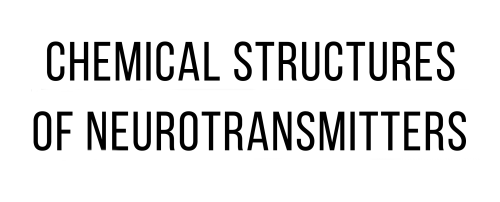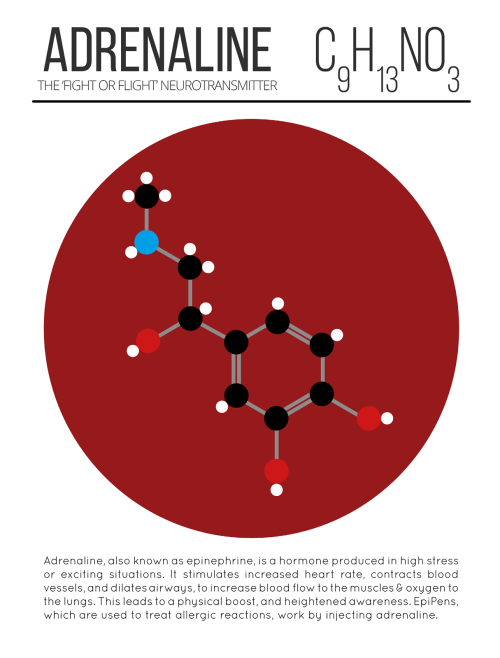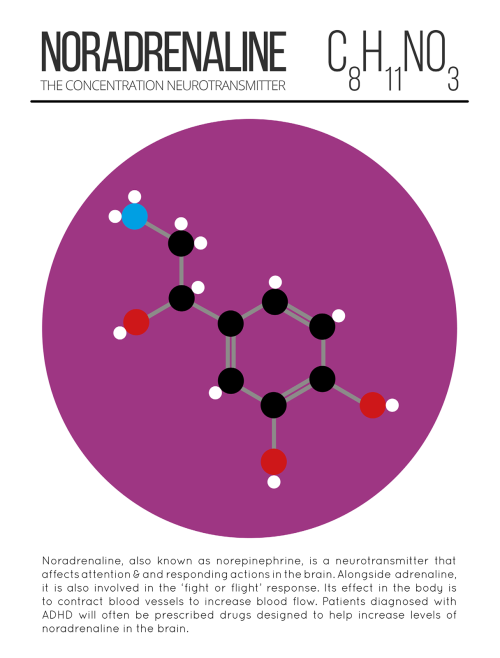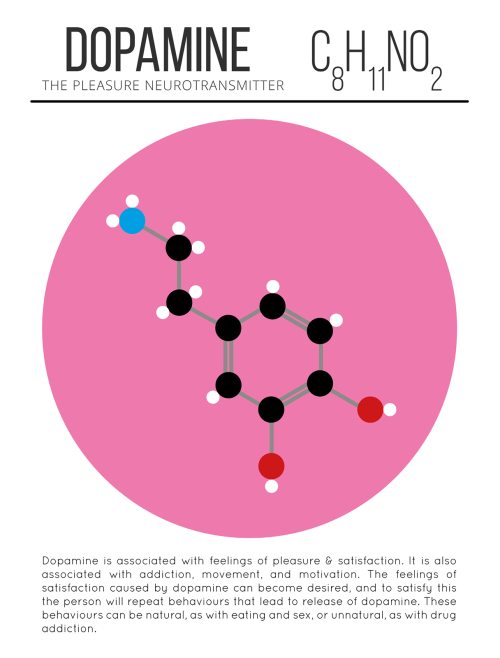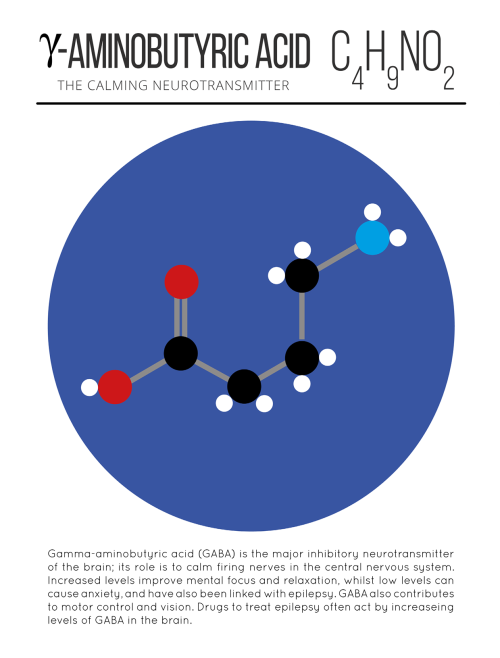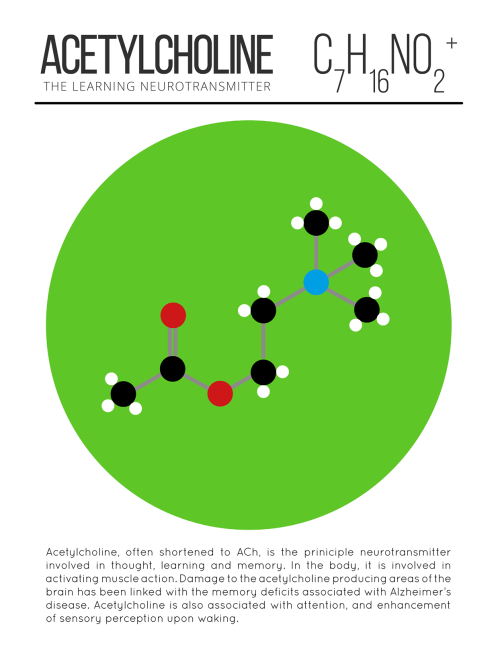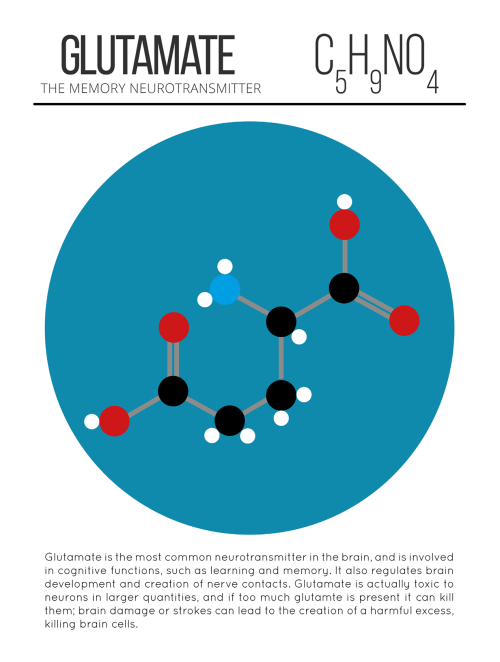Biochemistry - Blog Posts


2/12/18 - 83/100 days of productivity
Whiteboard time! I’m just preparing for my Cambridge interview by reviewing a mechanism I namedropped in my personal statement in the first pic, and then later on I was bored so I decided to see how long it would take me to learn and remember the Krebs Cycle. (Not as long as it looks like it should take!)
I totally should be revising things I need to regurgitate for mocks next week, but that’s boring. You know what’s not boring? Learning how a process that’s fundamental to life works!
Biochemistry Struggles

Our professor explaining protein folding! I'm hopeless already with this advanced biochem stuff.....

Science Fact Friday: Tetrodotoxin, ft. a small gif because I’m avoiding my real obligations. Why does tetrodotoxin not affect its host? More studies need to be done but at least a few species possess mutated sodium ion channels. The tetrodotoxin can’t interact efficiently with the altered channels.
Another interesting tidbit: Animals with tetrodotoxin can lose their toxicity in captivity. It is suspected that the animals accumulate the toxic bacteria as a side-effect of their diet. After several years of captivity on a tetrodotoxin-bacteria-free diet, the bacterial colonies living in the animals die, residual toxin is cleared from the system, and the animal is safe to handle.



Knowing the 20 Amino Acids is definitely a MUST for the 2015 MCAT
Amino acids that are usually negative (i.e. de-protonated) at physiological pH:
- Glutamate (E) Glu, and Aspartate (D) Asp
Amino acids that are usually positive (i.e. protonated) at physiological pH:
- Lysine (K) Lye, Arginine ® Arg
Histidine is sometimes charged at physiological pH.
physiological pH = 7, Neutral
Molecule of the Day: VX


VX (C11H26NO2PS) is a colourless, odourless, oily liquid under room temperatures. It is a member of the V-series of nerve agents, and is an extremely potent poison - only 0.01 grams of it is needed to kill a person by skin contact. VX was recently implicated in the assassination of Kim Jong-nam, the half-brother of the North Korean leader Kim Jong-un, in Malaysia.
VX is a potent inhibitor of acetylcholinesterase, which breaks down the neurotransmitter acetylcholine into acetic acid and choline. The normal function of the enzyme is to regulate the concentration of acetylcholine within the synaptic cleft, so as to control the frequency of binding of acetylcholine to cholinergic receptors on the postsynaptic cell membrane and hence the transmission of impulses across the synapse.

Consequently, the inhibition of acetylcholinesterase results in a rapid increase in the synaptic concentration of acetylcholine, as the presynaptic knob continues to synthesise it and secrete it into the synaptic cleft. As a result, the cholinergic receptors on the postsynaptic cell membrane are continually stimulated, and a rapid series of action potentials are triggered. This results in muscle spasms and eventual paralysis, leading to death by asphyxiation due to paralysis of the diaphragm.

VX exposure is usually treated using an injection of atropine and pralidoxime. Atropine inhibits certain cholinergic receptors, reducing the binding of acetylcholine to receptors and thus the triggering of action potentials. On the other hand, one end of pralidoxime binds to acetylcholinesterase and the other binds to the phosphate group of VX, which causes the VX molecule to detach from the enzyme together with the pralidoxime molecule (see below). This restores the ability of acetylcholinesterase to hydrolyse acetylcholine, hence reducing its synaptic levels.

VX is synthesised from phosphorus trichloride over multiple steps; first, it is methylated, reacted with ethanol, then transesterified with N,N-diisopropylaminoethanol to produce QL. This is then oxidised with sulfur, and isomerised via heating to produce VX.

Molecule of the Day - DDT


Dichlorodiphenyltrichloroethane (C14H9Cl5), more commonly known as DDT, is a colourless, tasteless solid under room conditions. It was used as an insecticide during the 1940s-1970s, and gained notoriety after Rachel Carson’s 1962 book, Silent Spring, which highlighted the health and environmental effects of DDT.

DDT acts by binding to voltage-gated sodium ion channels of neurons (as seen on the left of the diagram below), causing these channels to be permanently open instead of opening only upon the arrival of an action potential. Consequently, there is a continuous influx of Na+ ions into the neuron, which triggers a series of rapid action potentials and hence neuronal impulses. This leads to rapid muscle contractions, spasms, and death.

While this effect does not occur in humans and other non-insects, it is still moderately toxic, and as been shown to be an endocrine disruptor. Therefore, chronic exposure to it can lead to tumour formation, developmental problems, and birth defects. DDT is also considered to be a possible carcinogen.
Due to the hydrophobicity of DDT, it tends to accumulate in the lipids of living organisms rather than in the environment. This results in biomagnification, in which its concentration increases upon going up the food chain, as each organism of a rung of the chain consumes multiple prey. Consequently, the usage of DDT affected the populations of many birds of prey, such as the bald eagle.

In 1962, Rachel Carson published the book Silent Spring, which highlighted the negative effects of the usage of DDT and other pesticides on the environment and biodiversity. This book was revolutionary; it sparked a heated debate on pesticides and contributed to the 1972 US ban on DDT. The world followed suit; most countries around the world now prohibit the use of DDT, except for limited disease vector control purposes, such as for malaria.

DDT is synthesised by the condensation of a molecule of chloral and 2 molecules of chlorobenzene via an electrophilic substitution reaction, producing water as a by-product.

Molecule of the Day: Dopamine


Dopamine (C8H11NO2) is an important neurotransmitter involved in many signalling pathways in the body. At room temperature, it is a white powder that is freely soluble in water.
Dopamine plays a key role in the brain’s reward system and is associated with feelings of euphoria and pleasure. As a result, stimuli that cause greater amounts of dopamine to bind to the corresponding receptors on the post-synaptic membrane induce appetitive behaviour.
For example, drugs such as amphetamine bind to and inhibit dopamine reuptake transporters present on the pre-synaptic membrane, and can also inhibit monoamine oxidase, which normally metabolises dopamine. This causes the concentration of dopamine in the synaptic cleft to increase, and the resultant rise in binding of dopamine receptors leads to feelings of pleasure. However, in combination with the resultant tolerance, this can lead to addiction and dependence on such drugs.

Dopamine is biosynthesised from tyrosine in the human body, via the intermediacy of L-DOPA:

Low dopamine levels have been linked to Parkinson’s disease; this is because the main symptoms arise from the death of dopamine-producing cells in the brain. Consequently, one of the main methods of treating it is the injection of L-DOPA; while this does not recover the cells’ ability to produce dopamine, it can stimulate the remaining cells, and is also metabolised to form dopamine (see above).




Everyday Phenomena: The Maillard Reaction
At first glance, steak, French fries, bread, milk caramel, and soy sauce don’t have very many similarities. However, the preparation of these foods all have one thing in common: browning that occurs via the Maillard (my-YAR) reaction.
The Maillard reaction was first discovered in 1912 by Louis-Camille Maillard, and refers to a long chain of reactions that ultimately leads to browning of food. This chain typically begins with the condensation of an amine (often the amino acid lysine) with a reducing sugar (containing an aldehyde); one example of this Amadori rearrangement is shown above with lysine and glucose.
This Amadori product can react in a variety of different ways, including dehydration and deamination to produce a diverse array of molecules that give browned food a distinctive flavor; a few of these compounds are shown above. At the end of the sequence of reactions that occur during browning is a class of polymeric compounds known as melanoidins, which lend a brown color to the food.
Below about 140°C (280°F), the Maillard reaction does not proceed at an appreciable rate, although alkaline conditions (such as the lye used to make pretzels) can accelerate the process. Without this reaction, many foods we enjoy now wouldn’t be nearly as tasty!
Further Reading: Hodge, J. E., J. Agric. Food Chem. 1953, 1 (15), 928-943 (Full text)










Laboratoire 7/n 🥼
Laboratory
11 November 2023
An experiment on Test on Lipids, a challenge in my part because I have to recall some laboratory techniques in which I forgot for the past 4 years. Thankfully, my ading assisted in on how to use some of the apparatus because it's been 4 years since the last time I performed techniques in the laboratory. 👨🔬🥽🥼🧪
📸 Debbie

Copper essential for burning fat, researchers find
Though small amounts of copper are essential to health - oysters, liver, beans and nuts are good sources - copper’s role in metabolism has been unclear: Some studies found that it boosted fat burning, others that it depressed it.
University of California, Berkeley, Lawrence Berkeley National Laboratory and Howard Hughes Medical Institute researchers have now clarified the critical role that copper plays in nutrition: It helps move fat out of fat cells - called adipocytes - and into the blood stream for use as energy.
Without enough copper, fat builds up in fat cells without being utilized, said Christopher Chang, the Class of 1942 Chair and a professor of chemistry and of molecular and cell biology at UC Berkeley.
“Unlike other studies that link copper levels both to increased or decreased fat metabolism, our study shows definitively how it works - it’s a signal that turns on fat cells,” said Chang, who also is a faculty scientist at Berkeley Lab and a Howard Hughes Medical Institute investigator. “If we could find a way to burn fat more efficiently, this could be a big contribution to dealing with obesity and diabetes.”
The new study appeared online this week, and will be published in the July print issue of the journal Nature Chemical Biology.
“Copper regulates cyclic-AMP-dependent lipolysis” by Lakshmi Krishnamoorthy, Joseph A Cotruvo Jr, Jefferson Chan, Harini Kaluarachchi, Abigael Muchenditsi, Venkata S Pendyala, Shang Jia, Allegra T Aron, Cheri M Ackerman, Mark N Vander Wal, Timothy Guan, Lukas P Smaga, Samouil L Farhi, Elizabeth J New, Svetlana Lutsenko and Christopher J Chang in Nature Chemical Biology. Published online June 6 2016 doi:10.1038/nchembio.2098
Caption: The crystal structure of the cAMP-degrading enzyme phosphodiesterase PDE3B, showing two magnesium atoms (green) in the active site. Copper binds one of the amino acid residues in the pink loop at the left, blocking the activity of the enzyme. Credit: Lakshmipriya Krishnamoorthy and Joseph Cotruvo Jr., UC Berkeley
fun things to do in lab
accidentally crushing a pcr tube when opening it with one hand
dropping… anything. especially an entire box of frozen samples.
slightly too large gloves and getting them caught as you close tubes
when the magnetic spin bar spins too fast and does the thing
listening to someone else’s forgotten timer go off
“uh… what’s that smell..”
going in for a pipette tip and then overturning the entire box
16 hour time-points
srsly who invented 16 hr time-points
they’re inhumane
labelling rows and rows of 600 ul microcentrifuge tubes by hand
“we’re sorry but this reagent has been back-ordered for 3 months”
listening to the scraping noise of plastic culture flasks on metal shelves
getting your samples stuck in any sort of machine
“i need you to go and catalog every chemical we have”
cleaning cell culture incubators with aerosolized 70% ethanol
having the fire alarms go off when you’re literally in the middle of something that can not be put down no i will perish in this fire before i forgo this damn experiment!
that sense of pure panic when you realize you miscalculated how much reagent you need
“one of your mice died and its cage mates ate half the body”
We were just discussing in class today in the context of ubiquinated H2B. Neat!

Ubiquitin is a regulatory protein found in most tissues of many walled-celled organisms. Originally known as ubiquitous immunopoietic polypeptide, ubiquitin was discovered in 1975 and its mechanism identified by a team including Aaron Ciechanover, Avram Hershko, and Irwin Rose of the Fox Chase Cancer Center, for which they were awarded the Nobel Prize in Medicine in 2004. Ubiquitins act as traffic control agents within the cell, directing other proteins to various compartments within the cell including tagging proteins for destruction.
The word ubiquitin was formed in 1975 from the English adjective ubiquitous which dates only from 1837. Ubiquitous derives from the noun ubiquitary which dates from 1580s from the Latin preposition ubi meaning where and que meaning any, also, ever. Ubiquitary (meaning everywhere) originally referred to the Luthern doctrine that Christ is omnipresent.
Representation of ubiquitin protein, highlighting the secondary structure. α-helices are coloured in blue and β-strands in green. The sidechains of the 7 lysine residues are indicated by orange sticks. The two best-characterised attachment points for further ubiquitin molecules in polyubiquitin chain formation (lysines 48 & 63) are labelled.
Image of ubiquitin protein courtesy rogerdodd under a Creative Commons 3.0 license, used with permission.

Day 2 of our mushroom lab: running our sample through a DEAE-Sepharose column
Stupid Lab Mistakes: a Constant Across All Levels of Experience
So today was day one of a tyrosinase lab. We had to centrifuge our organic matter sample (homogenized mushroom gills) to separate the soluble proteins from the rest of the tissue, and we counterbalanced our sample with an identical centrifuge tube of equal weight filled with water. We did all of this under the supervision of a TA and our professor.
My lab partners and I have used centrifuges many times before, but what we (and the instructors) failed to notice was that these particular tubes required an adapter for this particular centrifuge. We were spinning it up to about 7000 rcf when we heard a muffled “bang,” then the centrifuge slowed to a stop. When we opened it up, we discovered that the water tube had EXPLODED, shattering into a hundred little plastic pieces. the tube containing our organic sample slurry was thankfully intact, but it was badly warped and cracked. We spent the next 20 minutes or so carefully wiping water off every nook and cranny of the centrifuge interior, thanking our lucky stars that it wasn’t mushroom gloop.
I keep thinking that gaining more practical lab experience will save me from this kind of thing, but if the three different generations of chemists present couldn’t keep it from happening then there is no hope. These incidents are the things that add unexpected excitement to my life, though, so I suppose it’s not all bad.

Blood is red, urine is yellow, and faeces are brown. Why? Chemistry*! *Disclaimer: shout-outs to biology and physics too.

Anti-microbial Peptides: Proteins that Pack a Punch
Antimicrobial resistance is a growing concern and it is currently estimated that approximately 2 million people are infected annually with serious infections that show antibiotic resistance to some degree. This contributes to the mortality of 23, 000 people with many more suffering severe complications as a direct result of antibiotic resistant infections. The economic burden on the US is thought to exceed $20 billion simply on health care bills alone, and a further $35 billion due to a societal loss in work based productivity (1).
The spread of antibiotic resistance is now widely believed to be a direct result of the anthropogenic release of antibiotics into the biosphere. We are now faced with the dilemma of how to treat these infections. In previous articles, I’ve talked largely about bacteriophages and how they are one possible solution to this complex problem. This article will introduce you to another class of antimicrobial agents, aptly called antimicrobial peptides (AMPs).
What are Antimicrobial Peptides?
Proteins are found ubiquitously throughout all cellular life and are like the mechanical parts of a car, helping your cells carry out a vast array of functions every single day. Peptides are small proteins that contain two or more amino acids joined by peptide bonds. Anyone who is familiar with biochemistry will be aware of the sheer diversity found amongst these versatile molecules. Needless to say, it should not be surprising that there are a large class of proteins involved in offensive cellular warfare. They are found widely in all domains of life and have evolved to give a cell a competitive advantage over its nastier neighbours.
Without getting too bogged down with the biochemistry, AMPs are characterised by their overall properties. AMPs that share common structural features will also have a similar function when targeting a cell. The diversity amongst these proteins can be seen in Figure 1, which shows some examples from the four classes of AMPs. The class I AMPs, the lantibiotics for example, all contain similar motifs which assign them a similar job. AMPs can range from anywhere between 6 to >59 amino acids, but are generally considered to be small proteins (2). They generally have a rather amphipathic nature and feature both positive and negative charges.
These peptides may have a number of rare (Figure 1), modified amino acids. The lanthionines are a class of AMP that contain lanthionine rings made from dehydrated serine and threonine residues connected by thioether cross-links. This happens after the protein leaves the ribosome and gives the protein some very unique properties which will be explained later in the article (3).
Figure 1. The four classes of AMPs, showing common examples in each class. Rare, modified amino acids are indicated by coloured circles with the three letter codes indicating the name of the residue. Thioether cross-links are indicated by an S coordinated by two black lines (3).
Implications for the Pharmaceutical industry
Our antibiotic pipeline is drying up (Figure 2), with few new drugs being approved by the Food and Drug Administration. Identifying novel antibiotics is a tedious process that requires a lot of time and effort from drug companies, which they are not willing to do. The reason for this boils down to economic reasons, as antibiotics are just not worth the investment. Unlike other drugs such as statins, antibiotics are only used for short periods of time by a patient. One course of treatment therefore doesn’t return a massive profit for the company. The second issue antibiotics face is that resistance to them occurs rapidly after they are put into circulation, so the company is not likely to get much use out of the drug. Therefore we need to find a new source for our antimicrobials. This is where the AMPs come in.
Currently, nearly 900 AMPs have been identified and characterised with many more undiscovered (2). They are an untapped source of drug discovery and they exhibit numerous benefits over their antibiotic cousins. As they are proteins, they have a genetic origin, which could provide an amenable platform for further development through random mutagenesis. This could produce a vast library of antimicrobial compounds (4,5), drastically improving our options for therapy.
Figure 2. Graph showing the steady decline in antibiotic development from 1980 to 2012 (1)
Nisin; not so nice if you’re a bacterial cell
AMPs were discovered in the 1930s although their use in the health industry has been fairly limited, resulting from the sheer difficulty and cost of manufacturing and purifying proteins on a large scale. The bacterially produced lantibiotics are by far the most well studied AMPs and have the most potential for the pharmaceutical industry. Nisin (E234) is the most well studied lantibiotic (Refer to Figure 1, Class I) and is produced by the bacterium Lactococcus lactis (6).
It shows broad spectrum activity on a large number of Gram-positive bacteria including other lactic acid bacteria, which has made it a coveted preservative in food processing. Currently it is added to cheeses, meats and beverages to extend shelf life and prevent the growth of spoilage organisms including spore forming bacteria such as Clostridium botulinum (6). The lantibiotics have also proven their capabilities for treating the clinically relevant pathogens methicillin-resistant Staphylococcus aureus and vancomycin-resistant Enterococci (7). They are also seen to have similar levels of activity as antibiotics and express low levels of toxicity to mammalian cells. Nisin exhibits poor oral availability making it more appealing as a topical agent or for intravenous application but there are also intentions to use it as a sterilising agent for catheters and medical equipment to help reduce the risk of infection (3).
So could lantibiotics like nisin be a good solution to antimicrobial resistance? Well more compelling evidence for nisin is that resistance has not been thoroughly documented. Nisin has been applied in sub-therapeutic concentrations in the food industry since the 1960s but still mostly retains its bactericidal ability. Resistance has been achieved artificially in the lab (discussed later in the article), but due to the mechanism of some lantibiotics including nisin, resistance is thought to be unlikely (6).
The mechanism behind nisin’s potency
Unlike animal cells, generally bacterial membranes have an overall negative charge and lack cholesterol (8). Nisin contains a high proportion of the positively charged (basic) amino acids lysine and arginine. These positive charges allow the protein to interact with the negative charges commonly associated with bacterial cell membranes (2). Nisin is good at aligning against Gram-positive bacterial membranes, where they multimerise to form short-lived pores (Figure 3). Hydrophobic regions help the protein to insert into the membrane and stabilise the pore (2), which allows the transport of ATP, ions and amino acids, eliminating the cellular membrane potential (9).
Nisin has a second trick up its sleeve. Its C-terminal, the portion of the protein containing the lanthionine ring motifs, allows it to latch onto the important membrane component lipid II (Figure 3). Lipid II is a precursor for peptidoglycan; the cell wall strengthening polymer found in both Gram-positive and Gram-negative bacteria. It is a common target for antibiotics including penicillin and vancomycin, which both target different stages of its synthesis. It helps to maintain the cell structure and prevents it from bursting under high osmotic pressure. When nisin binds to lipid II, it sequesters this molecule from the enzymes that catalyse its addition to growing peptidoglycan chains. Binding lipid II also helps to stabilise the transmembrane pores, further damaging the cell. As a result, not only is the cell wall weakened, but the cell loses its metabolic capabilities, through the loss of charged molecules.
The dual targeting system of nisin is thought to be the reason why resistance to nisin has not be well documented (10). The two processes are completely physiologically separate, and therefore to develop resistance, the bacteria would have to develop two unrelated mutations to counteract the effects of nisin.
Figure 3. Diagram showing the mechanism of several lantibiotics including nisin. AMPs are represented by lines made with clear circles. Phospholipids represented by green circles with tails. Lipid II is represented by orange hexagons (3).
What do we know about resistance towards nisin?
There are several proposed means by which an organism can be resistance to a toxin. Firstly, an organism may have innate immunity to a toxin simply because of its physiology. We see this largely in the Gram-negative bacteria towards nisin. The lipopolysaccharide (LPS) layer found on the outside of their cell wall provides protection against nisin and it has been shown that the oligosaccharides found within the core region of this structure greatly improve protection against nisin. It is believed that this is because metal ions are sequestered within this layer, adding additional positive charges to the site. Such charges would help to prevent nisin from aligning with the cell membrane (11). Removing these metal ions by sequestering them sensitises Gram-negative bacteria to nisin.
Emergent resistance is the type of resistance that should concern us the most, as it is the reason why we are now faced with the problem of antimicrobial resistance. It involves the acquisition of mutations or DNA that help confer tolerance to stress resulting from the action of a toxin (12). Although currently only produced in the laboratory, experiments carried out on the tolerance of clinically relevant bacteria towards nisin are crucial in highlighting the future of implementing an antimicrobial.
Resistance mechanisms have been documented in several bacteria including the causative agent of listeriosis, Listeria monocytogenes. Although not fully understood, changes in membrane composition have been attributed for the decreased susceptibility in resistant strains. In resistant strains, the bacterial membrane is composed of less negatively charged phospholipids. Similarly to sequestering metal ions near the membrane, this alters the overall net charge, helping to repel nisin.
The number of long chain fatty acids within its membrane is increased helping to reducing fluidity. This is believed to play a role in preventing nisin from inserting itself into the membrane. Studies show that nisin resistant strains were also less susceptible to cell wall acting components such as lysozyme and cell wall acting antibiotics. They did not identify the phenotypic change that gave additional protection, but this does indicate that a number of defence mechanisms are involved in defending cells against environmental stress from nisin (13).
Conclusion:
So could AMPs like nisin possibly serve as a replacement to our current armamentarium of antibiotics? AMPs are a largely untapped source of antimicrobials with many more still to be identified. AMPs may therefore serve as a new source of antimicrobials to help relieve the stress exerted on microorganisms by antibiotics. We have seen that nisin is an effective antimicrobial against a wide range of Gram-positive bacteria including spore forming bacteria. The dual-action of nisin challenges bacterial cells making it difficult for them to develop resistance. However, lab-based experiments have shown that it is possible to generate resistant strains showing the tenacity of bacteria to adapt to such potent environmental stresses. To learn from our previous mistakes with antibiotics, more responsible practices would need to be applied. Using combination therapy or rotating drug usage, as done with pesticides, could help further prevent resistance. Where they are likely to be applied in high concentration (in medical settings and agriculture), combination therapies should be used to further reduce the likelihood of resistance.
1. CDC. Antibiotic resistance threats. US Dep Healh Hum Serv. 2013;22–50.
2. Brogden KA. Antimicrobial peptides: pore formers or metabolic inhibitors in bacteria? Nat Rev Microbiol [Internet]. 2005;3(3):238–50. Available from: http://www.nature.com/doifinder/10.1038/nrmicro1098
3. Dischinger J, Basi Chipalu S, Bierbaum G. Lantibiotics: Promising candidates for future applications in health care. Int J Med Microbiol [Internet]. Elsevier GmbH.; 2014;304(1):51–62. Available from: http://dx.doi.org/10.1016/j.ijmm.2013.09.003
4. Field D, Begley M, O’Connor PM, Daly KM, Hugenholtz F, Cotter PD, et al. Bioengineered Nisin A Derivatives with Enhanced Activity against Both Gram Positive and Gram Negative Pathogens. PLoS One. 2012;7(10).
5. Hilpert K, Volkmer-Engert R, Walter T, Hancock REW. High-throughput generation of small antibacterial peptides with improved activity. Nat Biotechnol. 2005;23(8):1008–12.
6. van Heel AJ, Montalban-Lopez M, Kuipers OP. Evaluating the feasibility of lantibiotics as an alternative therapy against bacterial infections in humans. Expert Opin Drug Metab Toxicol. 2011;7(6):675–80.
7. Barbosa J, Caetano T, Mendo S. Class I and Class II Lanthipeptides Produced by Bacillus spp. J Nat Prod [Internet]. 2015;151008121848005. Available from: http://pubsdc3.acs.org/doi/10.1021/np500424y
8. Neumann A, Berends ETM, Nerlich A, Molhoek EM, Gallo RL, Meerloo T, et al. The antimicrobial peptide LL-37 facilitates the formation of neutrophil extracellular traps. Biochem J [Internet]. 2014 Nov 15 [cited 2014 Oct 28];464(1):3–11. Available from: http://www.ncbi.nlm.nih.gov/pubmed/25181554
9. Kordel M, Schuller F, Sahl HG. Interaction of the pore forming-peptide antibiotics Pep 5, nisin and subtilin with non-energized liposomes. FEBS Lett. 1989;244(1):99–102.
10. Islam MR, Nagao J, Zendo T, Sonomoto K. Antimicrobial mechanism of lantibiotics. Biochem Soc Trans [Internet]. 2012;40(6):1528–33. Available from: http://www.biochemsoctrans.org/bst/040/bst0401528.htm
11. Stevens K a., Sheldon BW, Klapes N a., Klaenhammer TR. Nisin treatment for inactivation of Salmonella species and other gram- negative bacteria. Appl Environ Microbiol. 1991;57(12):3613–5.
12. Kaur G, Malik RK, Mishra SK, Singh TP, Bhardwaj A, Singroha G, et al. Nisin and class IIa bacteriocin resistance among Listeria and other Foodborne pathogens and spoilage bacteria. Microb Drug Resist. 2011;17(2).
13. Crandall AD, Montville TJ. Nisin resistance in Listeria monocytogenes ATCC 700302 is a complex phenotype. Appl Environ Microbiol. 1998
My favorite part about being a Biochemistry major is seeing just how bad the lab materials I need to work with are-
"All right, this is... 'cobaltous acetate tetrahydrate', now that's a name... what's the safety data sheet look like-"
acute oral toxicity
carcinogenicity
reproductive toxicity
4 other things that would give my mom a heart attack if she knew what I working with-
"... Right, don't be stupid in lab next week-"
Also me this week-
"Ok, 35 milliliters of 12M HCl, got it HOLY FRICK I FORGOT YOU HAD FUMES-" *moves glassware further back into hood to finish measuring, hurries back to my own hood after* "Ok, now to add you to my solution-" *toxic gas quickly forming as by-product of reaction* *already had hood sash as low as it would go in preparation* *still had my heart pounding out of my chest*

